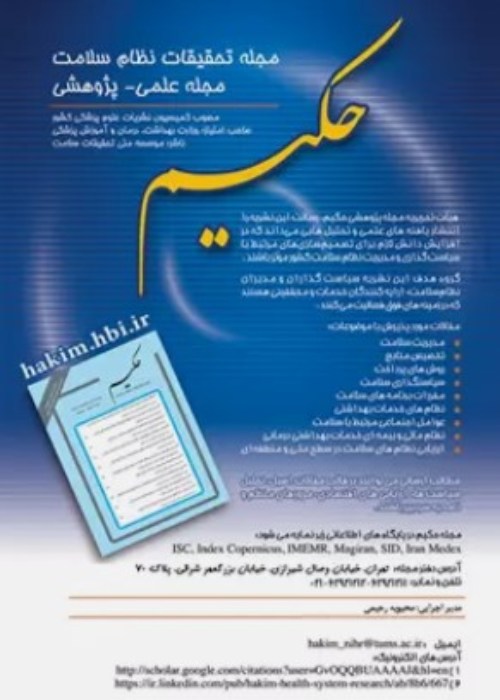Effects of auditory electrical stimulation (AES) on tinnitus improvement and associated complaints.
Author(s):
Abstract:
Introduction
About 10-15% of adult population experience degrees of tinnitus in their life. The purpose of present study was to determine the effectiveness of AES on tinnitus improvement and associated psychological complaints. Methods
Completing a standard tinnitus questionnaire, otolaryngological, comprehensive audiological and psycho acoustical tinnitus assessment in patients was made before and after AES. The patients received AES with a Nucleous Promontory Stimulation system. patients received bipolar square waves fewer than 400 Hz pulses (often 50 Hz) with duration of 0.5 sec. during the seven sessions of 30 min. In an attempt to measure the effects of tinnitus before and after AES, we used the Persian Tinnitus Questionnaire (TQ), designed to assess the dimensions of tinnitus complaints. The patients of our study had been unsuccessfully treated by many medical methods and gave their written consent to participate in the study, which was approved by the department & Research Center of Otolaryngology, Head & Neck Surgery, Iran University of Medical Sciences. Results
We used extratympanic auditory electrical stimulation (EAES) to treat 42 patients with persistent tinnitus. For each patient the standard tinnitus questionnaire (TQ) was filled before and after intervention of AES. In the group of patients in whom tinnitus was improved (n = 28), the global score of TQ decreased significantly (P=0.0001), whereas the same dimension of TQ showed no remarkable changes (P=0.064) in the “unimproved” group (n = 14). The decrease in the loudness of tinnitus was significant (P=0.002), but in the unimproved group the difference in the loudness was not significant (P=0.336). Conclusion
The TQ is an instrument which provides a broad description from both factor analysis and clinical evidence. Our findings indicate that the dimensions of psychological complaints due to tinnitus from before to after treatment with AES were significantly decreased. In conclusion, EAES reduces the effects of the tinnitus but presents limitations, mainly due to the short duration of the electrical residual inhibition of the tinnitus. It seems that the continuous use of the electrical stimulation by external electrical stimulation produces a progressive inhibition of the tinnitus in distressing tinnitus patients.Language:
Persian
Published:
Hakim Health Systems research journal, Volume:8 Issue: 3, 2005
Page:
15
magiran.com/p483180
دانلود و مطالعه متن این مقاله با یکی از روشهای زیر امکان پذیر است:
اشتراک شخصی
با عضویت و پرداخت آنلاین حق اشتراک یکساله به مبلغ 1,390,000ريال میتوانید 70 عنوان مطلب دانلود کنید!
اشتراک سازمانی
به کتابخانه دانشگاه یا محل کار خود پیشنهاد کنید تا اشتراک سازمانی این پایگاه را برای دسترسی نامحدود همه کاربران به متن مطالب تهیه نمایند!
توجه!
- حق عضویت دریافتی صرف حمایت از نشریات عضو و نگهداری، تکمیل و توسعه مگیران میشود.
- پرداخت حق اشتراک و دانلود مقالات اجازه بازنشر آن در سایر رسانههای چاپی و دیجیتال را به کاربر نمیدهد.
In order to view content subscription is required
Personal subscription
Subscribe magiran.com for 70 € euros via PayPal and download 70 articles during a year.
Organization subscription
Please contact us to subscribe your university or library for unlimited access!


